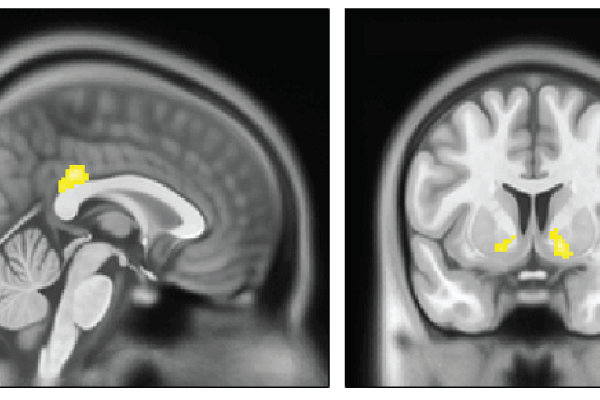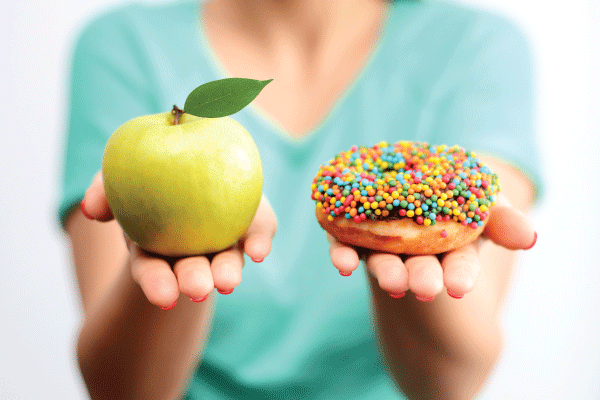Featured
Up-and-Coming Voices: Methods in Neuroscience
Poster presentations offer student and early-career researchers an invaluable opportunity to connect with colleagues and present their work to the broader scientific community. With many such events still taking place online, including the upcoming 2021 APS Virtual Convention, this Observer feature provides early-career psychological scientists who participated in the APS Virtual Poster Showcase with another platform to share their research. This edition spotlights a selection of research related to neuroscience.

Neural Correlates of Latent Preferences for Out-Group Harm
Kelsey Ichikawa, William Moore, and Mina Cikara (Harvard University)
What drew you to this research?
After becoming involved with racial and gender justice organizations in college and experiencing the political polarization that followed the 2016 election, I became interested in studying the mechanisms of intergroup division and harm. At the level of the brain, what networks help predict the spiteful actions one takes toward other groups? And how can we understand those actions as being not just preferred, but rewarding? In addition, there is a lot of great existing scholarship about computational models of cognition, and I was excited to apply that computational modeling approach to intergroup behavior. A reinforcement learning task and model-based fMRI allowed us to make precise quantitative hypotheses about the blood-oxygen-level-dependent (BOLD) signal for benign and spiteful rewards.
What did the research reveal that you didn’t already know?
The distinction between these signals is actually quite fine-grained. Our initial null result demonstrated that more nuanced methods like multivoxel pattern analysis and psycho-physiological interactions are needed to differentiate between the neural signatures of these intergroup reward outcomes.
This process also revealed to me some limitations of these social neuroscience designs, as well as opportunities for future directions. I conducted this fMRI study as part of my senior thesis, which was a joint project in neurobiology and philosophy, so alongside scanning participants’ brains I was also thinking seriously about the morality of intergroup emotions, like schadenfreude (taking pleasure in another person’s misfortune). This interdisciplinary approach highlighted the need to tease apart what exactly the positive reward signal responds to—is it the act of inflicting harm on the out-group, securing a larger gap in resources between groups, or feeling less vulnerable to an out-group threat? When we try to connect findings about neural activity and task-based decisions to complex social emotions like schadenfreude, it’s useful to distinguish between a momentary hedonic reward signal and higher-level pleasure or enjoyment, but reinforcement learning paradigms aren’t designed to account for that.

The Effects of Negative Life Events on Diet and Hippocampal Volume in Children and Adolescents
Sydney May Taylor (Fordham University)
What drew you to this research?
I was drawn to this research because I have always had an interest in the ways an individual’s choices and life experiences affect the brain in a physical way. Additionally, one of my biggest career aspirations is to earn my PhD in clinical psychology and specialize in the research and rehabilitation of eating disorders. My project combined these career aspirations with my passion for neuroimaging while also identifying a gap in previous literature.
Virtual Poster Showcase
See award-winning highlights of the 2020 Virtual Poster Showcase in the July/August 2020 Observer. The 2021 Virtual Poster Showcase will be open from May 26 through September 1, 2021. Learn more about posters and other aspects of the 2021 APS Virtual Convention.
What did the research reveal that you didn’t already know?
One of the most interesting findings that my research revealed was that a higher incidence of negative life events is related to higher added sugar intake when controlling for age, sex, income level, and daily caloric intake. There was no relationship between negative life events and saturated fat intake when controlling for daily caloric intake and age. When looking into the ways in which diet effects hippocampal development in children and adolescents, it was fat that showed a significant negative relationship with hippocampal volume, not added sugar. Although I could not run a mediation analysis, the unexpected results of my study were still interesting to me.
Also, while conducting research for my study, I found that there were gender differences when comparing negative life events and added sugar intake, but not when comparing negative life events and saturated fat intake. This specific finding piqued my interest and inspired me to look further into these gender differences in my future research.
Other Featured Research
Wai Man Wong, Elizabeth Davis, Sarah Myruski, Tracy A. Dennis-Tiwary (The City University of New York)
Wong and colleagues used ERPs to examine the basis for individual differences in how adults with anxiety bias their attention toward or away from threats. The researchers found that individuals whose cognitive control resources are intact tend to bias their attention away from threats, whereas those without such resources bias attention toward threats.
Amygdala Volume Differences Among Depressed, Maltreated, and Healthy Adolescents
Summer N. Milwood, Marie Gillespie, Akul Sharma (University of California, Irvine), Heather Huszti, Uma Rao (Children’s Hospital of Orange County)
Milwood and colleagues used automatic subcortical segmentation to examine differences in the amygdalae of healthy and clinically depressed adolescents, some of whom had experienced childhood maltreatment. The researchers found that depressed adolescents with a history of maltreatment had smaller amygdalae, which suggests that maltreatment may affect the development of this stress-sensitive brain region and psychopathology.
Katrina M. Daigle, Abigail B. Waters, Gansler A. David (Suffolk University)
Daigle and colleagues used fMRI data from the Human Connectome Project to examine how alcohol consumption impacts connectivity patterns in core neurocognitive networks. The researchers found that alcohol use may dysregulate these networks in individuals with a family history of alcoholism.
Matthew T. Ford, T. Lee Gilman, Aaron M. Jasnow, Karin G. Coifman (Kent State University)
Ford and colleagues used DNA sequencing to examine how genetic differences in dopamine reception influence emotional responses to film clips and peer rejection. The researchers found that a C/C genotype may buffer against social loss and rejection.
Feedback on this article? Email [email protected] or scroll down to comment.





APS regularly opens certain online articles for discussion on our website. Effective February 2021, you must be a logged-in APS member to post comments. By posting a comment, you agree to our Community Guidelines and the display of your profile information, including your name and affiliation. Any opinions, findings, conclusions, or recommendations present in article comments are those of the writers and do not necessarily reflect the views of APS or the article’s author. For more information, please see our Community Guidelines.
Please login with your APS account to comment.